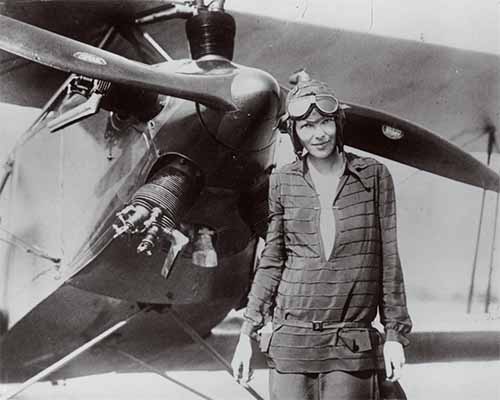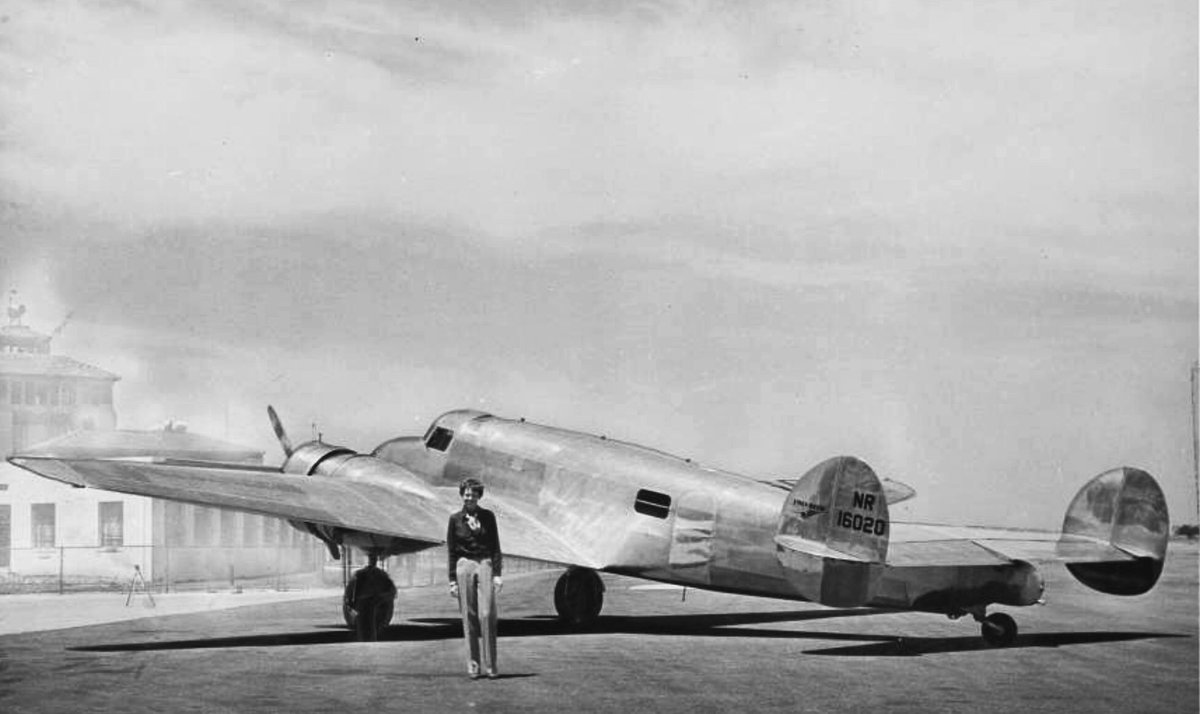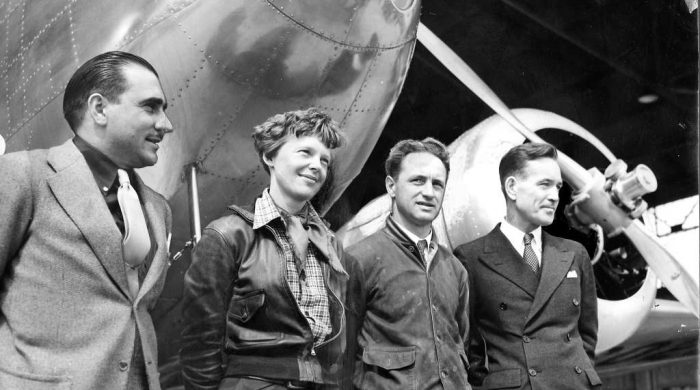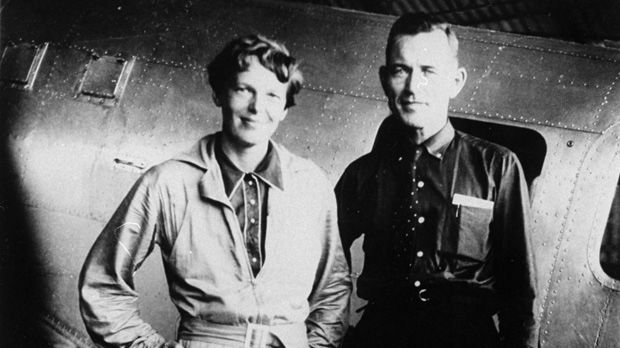The Mysterious Disappearance and Death of Amelia Earhart
A Great Aviator Missing

Howland Island is a tiny piece of land near the equator in the central region of the Pacific Ocean, just over 1.5 km long and less than 800 m wide. The island of coral has been uninhabited for a large part of its history, with the exception of a few years in the 1930s: the American government sent students there to maintain its claims of sovereignty and to build a track. landing. The island emerged from complete darkness on July 2, 1937. During her attempt to go around the world by plane, Amelia Earhart indeed chose this destination for a stopover in the Pacific. Before their planned stop on the island, Amelia Earhart and Fred Noonan, her navigator, have already flown 32,000 km: they crossed the United States, set sail for South America, then crossed the ocean Atlantic to Africa then to Asia. They take off from Lae on the east coast of Papua New Guinea to begin the last part of their journey crossing the Pacific.
To reach Howland Island, they must fly 4,000 km above the water and, after establishing radio contact with Coast Guard Cutter Itasca, stationed on the island, they are expected to use the radio direction to navigate to the airstrip. For reasons that remain unclear, only intermittent contact has been made, which is insufficient to allow Amelia Earhart and Fred Noonan to make their way to the runway. They never arrived on the island. Despite a massive search effort, no trace of the aircraft, nor of its pilot and navigator, has ever been found.
An extraordinary pilot

During the ten years preceding her disappearance, Amelia Earhart became an international celebrity. Her aerial exploits have been making headlines around the world since 1928, when she became the first woman to cross the Atlantic by plane. Even if she is not in charge herself, calling herself her role in this flight as a “bag of potatoes”, she receives a triumphant welcome on her return to the United States. She then embarked on a series of aeronautical challenges where she piloted herself. In 1932, she became the first woman to cross the Atlantic alone. At the time, she married George P. Putnam, the man who funded her first record. She is a very competent publicist who, when Amelia Earhart is not trying to set new records, organizes series of conferences and publishes books on her. His childlike charm and his sympathetic air earned him all the attention of the press. Even though there were many female aviators at the time, some of them being probably even better than her, the press called Amelia Earhart “the queen of the skies”.
And a great entrepreneur
The family of Amelia Earhart, moderately wealthy, can, at first, finance their air ambitions. Like many other people at the time, she lost a large part of her money during the stock market crash of 1929 and during the Great Depression that followed in the early 1930s. Therefore, she had to find her own money. money to finance her exploits, which she does with Putnam's help. In addition to writing books and lectures, she created her own flight school and launched several commercial products, including her own line of clothing and luggage. At the same time, it continues to beat aviation records. In 1935, she was the first person to fly solo from Honolulu, Hawaii, to Oakland, California. This pioneering flight was followed by two others in the same year - nonstop between Los Angeles and Mexico City, then from Mexico City to New York.
Trip around the world

Other air records being regularly established by other pilots, Amelia Earhart perpetually seeks to remain in the running by chaining exploits. After her solo flights in 1935, she was a lecturer in the Department of Aeronautics at Purdue University in Indiana. The faculty agrees to finance his next expedition, to buy him a new plane, a twin-engine Lockheed Electra. It costs $ 50,000 and it takes an additional $ 30,000 to configure it as Amelia Earhart, who plans to circle the world by an equatorial route that has never been attempted before, wishes.

On March 17, 1937, Amelia Earhart took off from Oakland, California, in an attempt to circumnavigate the world from the west. If it succeeds, it would not be the first round the world, but the longest - 29,000 miles, following an equatorial route. On board his Lockheed are Frederick Noonan, his navigator and former Pan American pilot, co-pilot Harry Manning and Paul Mantz, who acts as technical advisor. The latter decided to accompany them only to Honolulu, Hawaii. The first step towards Honolulu is tiring, but takes place without major incident. After having rested and refueled in Honolulu, the trio is about to take off from Pearl Harbor, opposite Honolulu, where the plane had to undergo maintenance. However, upon takeoff, the Electra rolled over, causing the landing gear to be destroyed. Fuel spills everywhere, but miraculously does not catch fire, and with the exception of a few bumps and bruises, no one is injured. A tragedy has just been avoided. The exact cause of the accident cannot be established. We think of a burst tire, and Mantz, who has often criticized the skills of Amelia Earhart, cites a pilot error. Whatever the cause, the plane suffered serious damage and Amelia Earhart must give up her world tour.
A second attempt

After having repaired the plane, and after having raised additional funds, Amelia Earhart launches out in a second attempt on June 1, this time with the intention to fly in the other direction, from west to east, with Noonan as sole guide. After a month, they have almost completed their world tour. The trip was difficult, with few opportunities to rest, but they arrived in New Guinea on June 29 without encountering any major problems, with the exception of difficulties in using radio navigation equipment. Given the distance they have traveled, they must be impatient to tackle the last leg of their Pacific crossing, even if it turns out to be the most difficult and dangerous part of the journey. They take off three days later, the Electra soars heavily into the sky because of its heavy fuel load, and heads for Howland Island.
Unexplained disappearance
We still don't know why they will get lost. The most obvious answer is that they simply couldn't find the island and ran out of fuel, which forced Amelia Earhart to ditch the ocean. However, such a maneuver is very difficult, even in perfect conditions, and after 20 hours of flight, Amelia Earhart must have been extremely tired. In such circumstances, it is not difficult to imagine the plane crashing into the water. Even if she managed to land safely, the probability of staying afloat for a long time would not have been very high. In the vast expanse of the Pacific Ocean, the chances of being rescued are low, especially when rescuers are unsure where to look.
The exact reason why they got lost is unknown. Failure to make good enough radio contact likely played a role. Perhaps there was a problem with the aircraft's transmitter, or the pilot and navigator were not used to using this equipment. Some have speculated that the radio antenna was damaged during takeoff, but it is not possible to know for sure until the plane has been found. The chances of doing so are slim given the depth of the water in this part of the Pacific.
The radio messages received from the aircraft by Itasca were strong enough to indicate that it was not far away. According to the last message, Noonan had established a position, indicating that he thought they had flown far enough east to reach Howland and that they were now flying north to south to try to find the island. It turned out later that Howland's position had not been correctly indicated on the American naval charts in use at the time - there was a difference of 5 nautical miles (or 9 km). The Electra having failed to arrive at the scheduled time, the Itasca begins to emit black smoke, visible for miles around, therefore, if the plane had been somewhere in the vicinity of the Island, Amelia Earhart and Fred Noonan should have seen it.
Many theories
Needless to say, in the absence of a definitive answer, all kinds of theories have been put forward to try to explain this disappearance. At the time, some thought that Amelia and Noonan could have gone back when they saw that they could not find Howland. Intensive research has been launched around the islands over which the aircraft could have passed and which are on the way to Howland. We found nothing. New research has been undertaken regularly over the years, particularly on the island of Nikumaroo. There were signs of life there, indicating that people stayed on the island for a period of time and at about the right time, but nothing could be explicitly linked to Amelia Earhart or Fred Noonan.
According to another thesis, they were captured by the Japanese and kept prisoners as spies. Saipan testimonies from the 1960s say witnesses on the island saw two Americans, a man and a woman, guarded by Japanese soldiers who, according to some reports, took their prisoners into the forest and executed them . It was then said that Amelia Earhart and Fred Noonan were hired by the United States government to spy on Japanese positions in the Pacific - an idea that has been widely discredited. A trip around the world also publicized in many countries, including Japan, would hardly have been a good cover for secret spy operations.
A tragic end for an exceptional woman
In the end, all we can say is that the plane got lost at sea. Even today, despite all the technology available to track planes, it will happen from time to time that the one gets lost or deviates considerably from his route, for no apparent reason. In the 1920s and 30s, when Amelia Earhart was flying, radio technology was in its infancy and the equipment at its disposal was new and had received little testing. This aviation pioneer pushed the boundaries of what was possible. She demonstrated that women are just as capable of flying an airplane as men. Flying was a dangerous business at the time, and Amelia Earhart was just one of the many people who lost their lives while pursuing their ambitions. The pilots relied on their instinct and luck, as much as on their skills and experience. We don't know what happened to Amelia Earhart, and we will probably never know for sure. All that is certain is that on this fateful flight, his luck turned.









































































































































































































































































































































